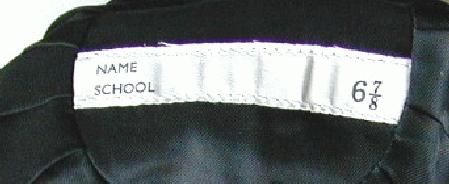
Figure 1.--A grammar school boy has provided this photo of the inside of his school cap--which his mother had proudly saved for him. The owner's name was usually inscribed in ballpoint pen. Click on the image to see what his cap looked like.

A HBC reader asks about how school caps were sized. Obviously, if a boy's cap was to fit properly it needed to be of the correct size. Like other items of headgear, school caps were usually sold in sizes which went up in eighths and were based on the width of the head
Obviously, if a boy's cap was to fit properly it needed to be of the correct size. Like other items of headgear, school caps were usually sold in sizes which went up in eighths and were based on the width of the head - and hence the diameter of the cap - in inches. One HBC reader wore caps in both elementary school and grammar school and seems to remember that there were sizes like 5 and a quarter are so in primary school. Grammar school boys of course wore larger sizes. A gramamr school boy with a small head might require, for example, a size 6½, a much bigger boy a size 7 3/8. Although the sizes were based on measurements in inches, however, the latter term was not used: a cap, that is, would be referred to as 'size 7' (or whatever), not as 'size 7 inches'. In a few cases, school caps have been sold in a more restricted range of sizes marked 'S' (for 'Small'), 'B' ('Boy'), 'Y' ('Youth'), 'L' ('Large'), or 'XL' ('eXtra Large'). A company which currently sells school uniforms for a few Surrey schools over the internet requires the circumference of a boy's head to be stated in centimetres, 51 to 57. These correspond to the more usual diameters of 6 3/8 to 7 1/8 inches.
The sizes of school caps were sometimes indicated by removable paper stickers or by small pieces of card stapled to the caps. More commonly, however, sizes were more permanently indicated. Sometimes a cap had a beige-coloured circular section to the otherwise usually black lining and the size would be printed, in numerals, on that section. In other cases, the numerals were printed in black, stamped in blue, purple, or black, or embroidered, sometimes in red, on the white name tape which ran across the centre of the lining. (This tape might also have the words NAME and SCHOOL printed on it, although this was not common.) In yet other cases, there would be a small white tab sewn into the cap where the central section joined the rest of the lining; these labels too had the numerals printed in black. Those mentioned above in sizes marked 'S', 'B', etc similarly had the appropriate letter printed on such a small tab. Where school caps are still available, this last method of showing the size - with numerals or letters printed on a tab - seems to be the most common.
Related Cap Pages in the Boys' Historical Web Site
[Return to the Main English school uniform cap size page]
[Return to the Main cap page]
[Australian caps]
[English caps]
[Japanese caps]
[New Zealand caps]
[Scottish caps]
Navigate the Relate Boys Historical Clothing Uniform Garment Pages
[Main garment page]
[Blazers]
[Bookbag]
[Caps]
[Coats]
[Hose]
[Kilts]
[Pants]
[Shirts]
[Sandals]
[Smocks]
[Suits]
[Sweaters]
[Ties]
Navigate the Boys' Historical Clothing Web Page
[Introduction]
[Activities]
[Biographies]
[Chronology]
[Clothing styles]
[Countries]
[Bibliographies]
[Contributions]
[FAQs]
[Glossaries]
[Satellite sites]
[Tools]
[Boys' Clothing Home]
